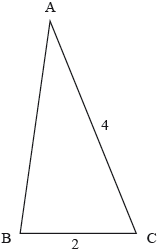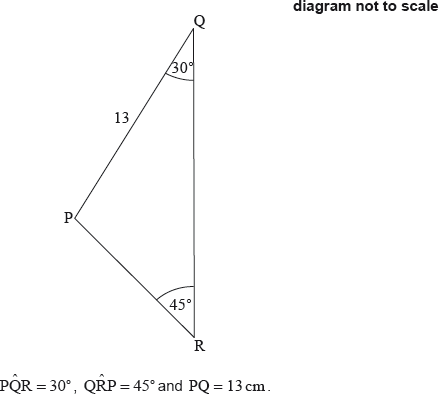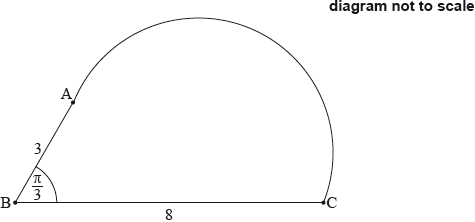| Date | November 2018 | Marks available | 4 | Reference code | 18N.2.AHL.TZ0.H_11 |
| Level | Additional Higher Level | Paper | Paper 2 | Time zone | Time zone 0 |
| Command term | Determine and Sketch | Question number | H_11 | Adapted from | N/A |
Question
Consider the rectangle OABC such that AB = OC = 10 and BC = OA = 1 , with the points P , Q and R placed on the line OC such that OP = , OQ = and OR = , such that 0 < < < < 10.
Let be the angle APO, be the angle AQO and be the angle ARO.
Consider the case when and QR = 1.
Find an expression for in terms of .
Show that .
By sketching the graph of as a function of , determine the range of values of for which there are possible values of .
Markscheme
* This question is from an exam for a previous syllabus, and may contain minor differences in marking or structure.
METHOD 1
use of tan (M1)
(A1)
A1
METHOD 2
AP (A1)
use of sin, cos, sine rule or cosine rule using the correct length of AP (M1)
or A1
[3 marks]
QR = 1 ⇒ (A1)
Note: This may be seen anywhere.
attempt to use compound angle formula for tan M1
(A1)
(M1)
or A1
M1
Note: Award M1 for multiplying top and bottom by .
AG
[6 marks]
increasing function with positive -intercept A1
Note: Accept curves which extend beyond the domain shown above.
(0.618 <) < 9 (A1)
⇒ range is (0 <) < 4.68 (A1)
0 < < 4.68 A1
[4 marks]




